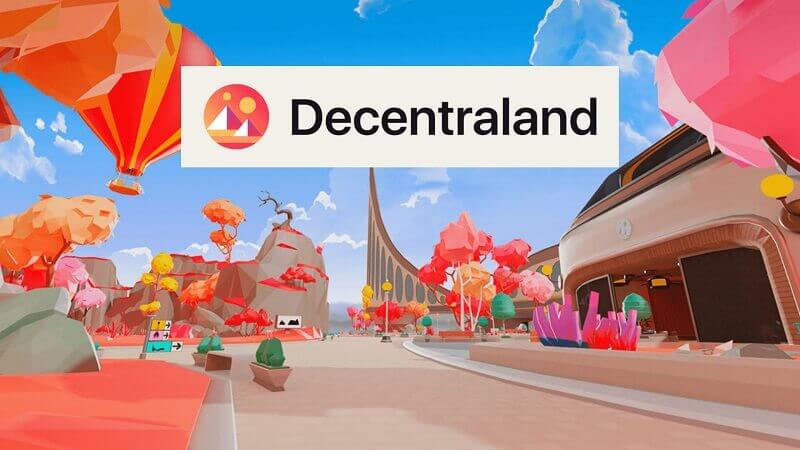As we delve deeper into the digital age, Web3 apps are emerging as the future of the internet. These apps have the potential to reshape our interactions with digital platforms, revolutionizing industries across the board, and creating a sense of an impending digital renaissance.
Web3, or Web 3.0, brings along a new paradigm that emphasizes decentralized and secure interactions in the digital world. But what are Web3 apps, and why should we care?
Let’s dive into these futuristic entities and explore some of the top selections that are setting the stage for the next-generation internet.

Understanding the Web3 Concept
Web3, also known as Web 3.0, is an evolution in the architecture of the internet that promises to offer an entirely new way of interacting with digital platforms. Unlike the existing paradigm where interactions are mediated by centralized entities, Web3 promotes a peer-to-peer model that puts users in control. Web3 apps leverage advanced technologies like artificial intelligence (AI), blockchain, machine learning, and the semantic web to create a more dynamic and personalized digital experience.
These apps are decentralized, meaning they’re not controlled by any single entity. They are interoperable, allowing seamless integration with various other apps and platforms. Web3 apps are also permissionless and self-governing, emphasizing user control over data. Furthermore, these applications are typically built on secure networks, prioritizing user privacy and data security.
The decentralized nature of Web3 applications creates an environment where power and control are distributed among the users. This redistribution of control provides enhanced security, better privacy, and a more personalized digital experience. Users can experience significant improvements in various areas, from business transparency to social media experiences, risk management in IoT devices, marketplace transformation, and more.

A Glance at Top Web3 Applications
The concept of Web3 might seem abstract, but it’s already becoming a reality through various pioneering applications.
Let’s take a closer look at some of the top Web3 apps that are paving the way for the next generation of the internet.
Everledger
Everledger is a global, distributed digital registry that uses blockchain technology to provide a unique digital record for each user. The app is designed to combat fraud and enhance trust in the global supply chain, making it one of the key Web3 apps revolutionizing the business industry.
Furthermore, Everledger’s primary use cases extend to tracking high-value assets like diamonds, gold, and wine. By providing a transparent and immutable record of an asset’s history, consumers can authenticate their purchases. This breakthrough approach demonstrates the power of Web3 apps in ensuring authenticity, enhancing consumer confidence, and significantly reducing fraudulent activities in various industries.
In this regard, the best Web3 business ideas concern the supply chain.
Storj
Storj is a decentralized cloud storage platform that offers secure data storage across a distributed network.
Leveraging blockchain technology, Storj revolutionizes traditional cloud storage by offering unlimited uploads and downloads and exceptional data privacy.
Brave Browser
Brave browser is a popular Web3 browser known for its privacy-enhancing features. It effectively blocks unwanted ads and trackers and uses blockchain technology to protect users’ privacy. Additionally, it provides monetization options for users, adding a new dimension to the browsing experience. Brave is definitely one of the best Web3 projects out there.
Brave is a Web3 browser that offers a tailored internet experience that prioritizes user-centricity. It addresses long-standing privacy concerns, providing a space where users can browse the web safely, knowing their data isn’t being exploited. Not only does Brave remove disruptive ads, but it also speeds up page loading times, providing a smooth browsing experience.
The reward system, powered by Basic Attention Token (BAT), offers a unique take on ad engagement. Users can opt-in to view privacy-respecting ads and are rewarded with BATs, which can be tipped to content creators or services, fostering a fair internet economy. This exemplifies the transformative potential of Web3 applications, seamlessly integrating blockchain technology into everyday internet use.
Beaker Browser
Beaker Browser is a peer-to-peer web browser that empowers users to publish web apps and websites directly from the browser. Its user-friendly design eliminates the need for separate servers, making the content hosting process more secure and straightforward.
Sola
Sola is a decentralized social media platform based on the Ethereum blockchain. It uses AI and blockchain to distribute information according to user preferences. It is a testament to how Web3 can shift the power dynamics in the social media industry.
Decentraland
Decentraland is an online virtual world that highlights the potential of Web3 in the metaverse. It offers a fully immersive experience where users can interact, socialize, and even own virtual land.
Decentraland is an intriguing example of a Web3 application that’s literally shaping a new reality online. It opens the door to a realm where the lines between the physical and digital world blur, marking the onset of a metaverse.
Participants can create, explore, and trade in this virtual world, showcasing a perfect blend of social networking and gaming. Additionally, the land in Decentraland isn’t just pixels on a screen – it’s represented by non-fungible tokens (NFTs) on the Ethereum blockchain. This ownership is immutable and transparent, granting users complete control over their virtual assets.
The essence of Web3 in Decentraland’s design redefines what online platforms can offer, promoting a high level of user autonomy and decentralized governance.
Decentraland is definitely one of the best metaverse games right now.

Steemit
Steemit is a social media platform that integrates Web3 technology to change the way content creators are compensated.
This blockchain-based blogging and social networking site incentivizes content creation and community participation by distributing rewards in the form of cryptocurrency. It provides an innovative example of how Web3 technology can disrupt traditional social media models, making it more democratic and rewarding for users.
With Steemit, the power of digital communication is returned to the individuals, promoting freedom of speech and fostering a genuinely user-centric community.
Ethlance
The utilizations of Web3 in the job seeking and professional networking domain have led to the creation of platforms like Ethlance. This online platform facilitates job applications and uses blockchain technology to streamline the process of pairing job seekers with appropriate employers.
On top of that, Ethlance stands out among innovative Web3 applications that pave the way for freelancers. Ethlance dismantles the traditional barriers between freelancers and companies as a decentralized talent marketplace. This allows employers to reduce their recruitment costs, while freelancers gain increased control over their work.
Of course, Web3 jobs can also be found on the platform.
Secretum
Your essential list of Web3 applications for 2023 must include Secretum, a novel decentralized messaging app.
Think of Secretum as a decentralized alternative to messenger apps such as WhatsApp. Users can connect without the need for a phone number or an email address, thereby significantly enhancing security and privacy. Additionally, Secretum’s built-in trading functionality enables efficient trading of cryptocurrencies, NFTs, and other blockchain tokens.
DTube
As Brave serves as the decentralized alternative to popular browsers, DTube stands as an alternative to the video streaming giant, YouTube. This decentralized video streaming platform doesn’t control the videos that appear in user feeds. Users retain full control over what they see and share on DTube.
Additionally, users dictate the selection of videos for monetization. As a leading Web 3.0 application for users in the emerging Web3 landscape, DTube also promotes decentralized governance. Users have complete control over censorship and guidelines for content visibility and usage on the video-streaming platform.

Conclusion
An exploration of top Web 3.0 applications reveals that factors like decentralization, security, ease of use, and transparency will fuel the Web3 revolution. Web3 apps have begun to gain definition and functionality, and the variety of applications is the fascinating aspect of Web3.
Instead of being confined to a single platform, Web3 applications have proliferated across multiple industries and use cases. Over time, the evolution of Web3 apps may signal significant breakthroughs for Web3 as a broader movement. Explore more apps in the Web3 realm and join the journey towards a more decentralized, user-centric digital world.